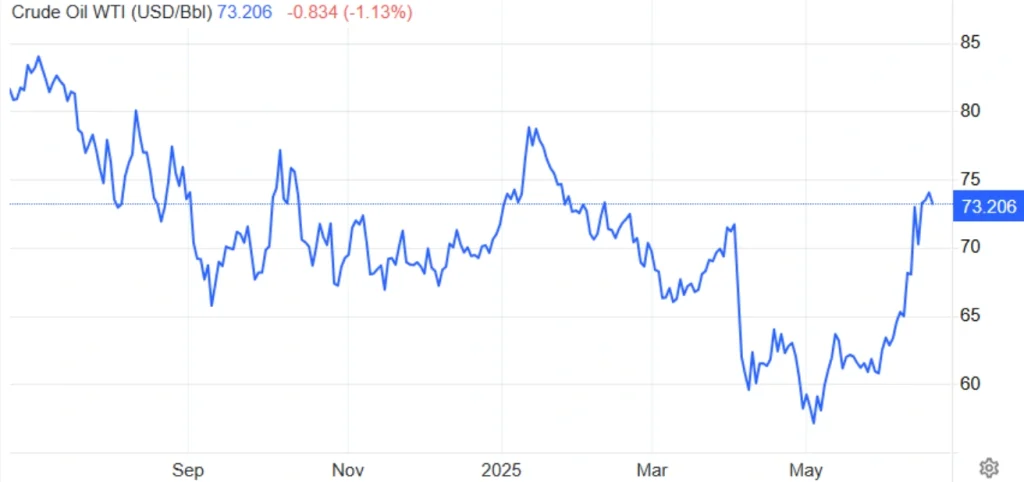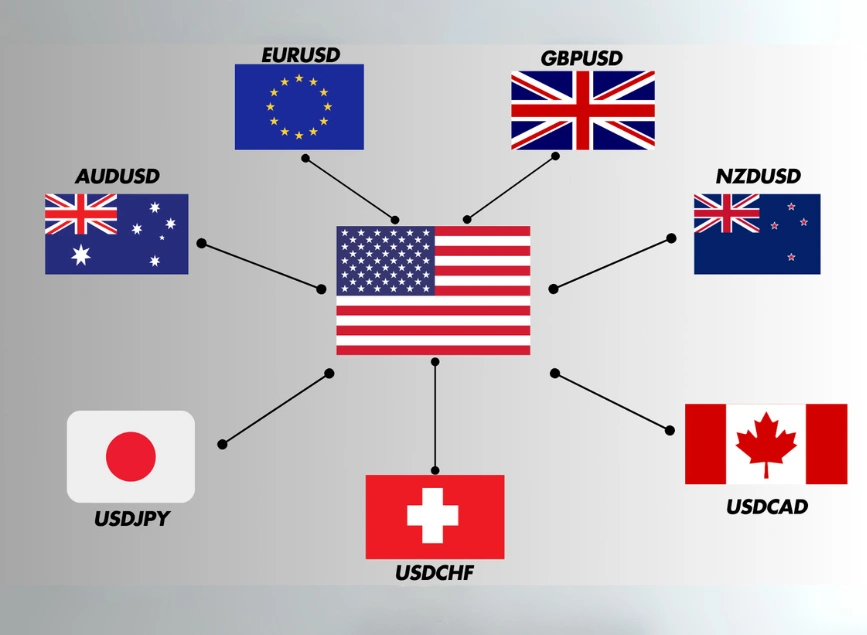
Oil Prices Surge 2.7% After U.S. Strikes on Iran’s Nuclear Sites
Key Developments at a Glance
| Indicator | Status |
|---|---|
| WTI Crude Oil Prices Surge | Up 2.7% intraday to around $74/barrel |
| Strait of Hormuz Oil Flow | Carries ~20% of global oil trade |
| Iran’s Parliament Vote | Approved Strait closure; awaiting Security Council ratification |
| Market Sentiment | Heightened geopolitical risk |
What Happened?
Oil prices surged on Monday after the U.S. launched airstrikes on Iranian nuclear facilities over the weekend. The market is now bracing for Iran’s potential retaliation—which may include a blockade of the Strait of Hormuz, a key energy chokepoint for global oil and gas shipments.
📊 WTI crude rose as much as 2.7%, trading near $74/barrel, driven by geopolitical tension and speculation about future supply disruptions.
Market Reactions: Initial Energy Market Response
| Factor | Current Status | Potential Outcome |
|---|---|---|
| WTI Crude Price | ~$74 per barrel | Could spike above $100 if Strait is closed |
| Geopolitical Tension | Direct U.S. military involvement | Heightened systemic energy risk |
| Strait of Hormuz | Awaiting Iran’s National Security Council decision | Risk of partial or full blockade of oil transit |
Why Is the Strait of Hormuz So Critical?
The Strait of Hormuz connects the Persian Gulf to the Arabian Sea—serving as a strategic artery for 20 million barrels of oil per day, or roughly 20% of global oil trade.
🌏 Major Stakeholders:
- Exporters: Iran, Iraq, Saudi Arabia, UAE
- Importers: China, India, Japan, South Korea
🚨 Any disruption in this chokepoint could lead to massive price shocks, supply chain crises, and geopolitical instability.

Impact Breakdown: U.S. Strikes & Market Fallout
🛢️ Oil Market
If Iran enacts even a partial blockade or escalates with attacks on tankers, prices could rapidly surge past $100/barrel, especially given tight global inventories.
📈 Stock Markets
- Energy stocks: likely to rally on price expectations
- Broader indices: could decline due to inflation concerns and rising costs
💱 Currency Markets
- USD: May strengthen as a “safe haven” in times of conflict
- Oil-importing nations’ currencies: Likely to weaken (e.g., INR, JPY, KRW)
🌐 Cryptocurrency
Crypto markets may see increased volatility. While Bitcoin is sometimes seen as a geopolitical hedge, it can still react sharply to global uncertainty.
Read More: Strait of Hormuz: The Strategic Energy Lifeline Amid Tensions
Outlook: What Comes Next?
With direct U.S. involvement, oil markets are entering one of their most precarious phases in years. While the ultimate decision on closing the Strait lies with Iran’s Supreme National Security Council, even the threat alone has proven sufficient to jolt markets.
🔮 Potential Scenarios:
| Scenario | Description | Oil Price Estimate |
|---|---|---|
| 🟢 Optimistic | De-escalation via diplomatic mediation | $75–$80 per barrel |
| 🔴 Crisis | Closure of Strait or attacks on oil infrastructure | $100+ per barrel |
Final Takeaway
The Strait of Hormuz crisis could redefine global energy flows and trigger massive economic and strategic realignments. Investors should closely monitor geopolitical signals and prepare for extreme volatility in energy markets, equities, currencies, and commodities.
🔍 In high-risk periods like this, diversification, risk hedging, and real-time analysis are more essential than ever.
Share
Hot topics

What Is the US Dollar Index (DXY) in Forex?
If you’ve spent any time exploring global markets, you’ve certainly heard about the US Dollar Index, known as DXY. For many beginner traders, it appears to be one of those...
Read more




Submit comment
Your email address will not be published. Required fields are marked *